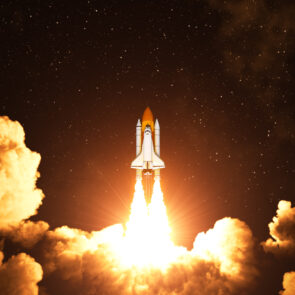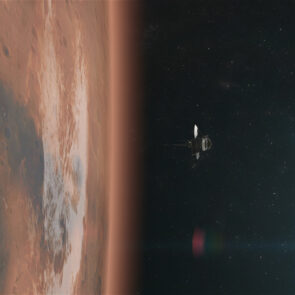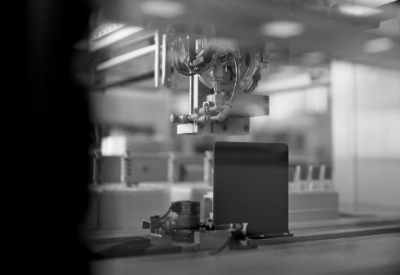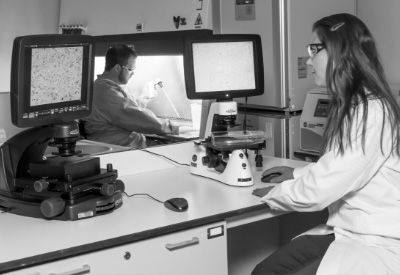January 2024 | Tips & Information
Exploring Radioisotope Thermoelectric Generators Power Sources in Space
Radioisotope Thermoelectric Generators (RTGs) are a remarkable innovation in spacecraft power systems, providing power for various space missions throughout our solar system.
These generators are a type of nuclear battery that operates by harnessing the heat derived from the naturally occurring breakdown of radioactive materials, a process that occurs at a fixed and gradually declining speed. This degradation is solely dependent on the amount of the fuel isotope used (typically pellets of plutonium oxide) and its half-life (i.e., decay time).
The classic mechanism underlying RTGs involves exploiting the substantial temperature disparity between the radioactive material serving as nuclear fuel and the vacuum of space. This temperature gradient is cleverly utilized across a large number of specialized solid-state metallic junctions known as thermocouples, which are connected in a series to enable the generation of electrical current at a high voltage without the requirement for any moving components.
A new Multi-Mission Radioisotope Thermoelectric Generator (MMRTG) was developed by NASA and the Department of Energy and boasts even more advanced capabilities. These models still rely on the natural decay of radioactive material, but they can operate on planets with an atmosphere—like Mars—in addition to their standard use case in the vacuum of space. This additional functionality is achieved by incorporating a new thermocouple design that can operate with a much smaller temperature difference than current designs.
Understanding the Functionality and Applications of RTGs
The core purpose of RTGs revolves around furnishing electrical power to diverse spacecraft components, encompassing vital scientific instruments and essential onboard systems. Other NASA missions, such as Cassini, have successfully employed RTGs—like the General Purpose Heat Source (GPHS) RTGs—to procure indispensable electrical power for their deep space missions, sustaining critical operations in the extraterrestrial environment.
RTGs are a preferred power source in scenarios where other alternatives, such as solar energy, might be unfeasible or inadequate to fulfill the specific power needs essential for accomplishing scientific or operational objectives.
It’s crucial to note that RTGs distinctly differ from fission reactors and do not engage in nuclear fission. Moreover, the plutonium utilized in RTGs is distinct from that utilized in nuclear weapons, assuring the reliability of these power systems without posing serious safety risks.
Efficiency and Cost Analysis of RTGs
RTGs are acclaimed for their unparalleled reliability and efficiency. Despite their relatively high production costs, their durability and extended operational lifespan often offset the initial investment. Their reliable ability to produce power consistently over prolonged periods makes them a cost-effective choice for missions requiring sustained power in space.
Power Output and Longevity of RTGs
An RTG’s power output is contingent upon the specific requirements of each mission. Although they might not yield high levels of power, they offer a steady and consistent power supply throughout extended durations. Some earlier RTG models have notably functioned efficiently for several years, highlighting their exceptional reliability and longevity in space’s demanding conditions.
Addressing Challenges in Space Technology Development
RTGs are especially helpful for space technology capabilities due to the various obstacles space poses to conventional power sources, necessitating innovative solutions. Some of these challenges include:
Radiation Exposure
Objects in space endure continuous and intense exposure to radiation, such as galactic cosmic radiation (GCR) and single-event effects (SEEs). This exposure can potentially cause irreversible damage to inanimate objects, emphasizing the need for radiation-hardened components and systems.
Extreme Environments
Space is characterized by extreme temperatures, with conditions ranging from near absolute zero to significantly high temperatures. Components, including conventional power sources, often demonstrate varied performance under these extreme temperature fluctuations.
Remote and Inaccessible Locations
Space missions often involve sending technology and equipment to locations where human intervention for repair or maintenance is not feasible. This necessitates the development of durable, self-sustaining systems capable of extended operation without external servicing.
City Labs: Transforming the Landscape of Space Power Solutions
Our pioneering NanoTritium™ batteries are another type of nuclear power source renowned for their space-based application potential. City Labs is already collaborating with NASA and the U.S. Space Force to develop nuclear power solutions for missions across our solar system, including one effort that aims to introduce a transformative radioisotope-based ion engine tailored explicitly for small satellites and another collaboration to develop self-powered wireless autonomous imaging sensors for satellites.
These innovative partnerships leverage the unique capabilities of City Labs’ nuclear battery technology, aiming to revolutionize the capabilities of small satellites by offering prolonged mission durations, enhanced propulsion, and expanded operational capabilities.
NanoTritium™ Batteries: An Ideal Space Power Solution
The technology behind NanoTritium™ batteries grants exceptional resistance to radiation, extreme temperatures, and vibrations, making them an unparalleled choice for space applications. These batteries, subjected to rigorous third-party testing, exhibit remarkable endurance, showcasing their functionality in temperatures ranging from -55°C to +150°C. Unlike conventional batteries reliant on chemical reactions, NanoTritium™ batteries harness the decay process of tritium, a rare hydrogen isotope, ensuring a predictable and sustained power output for over 20 years.
Advantages and Unique Capabilities of NanoTritium™ Batteries
City Labs’ NanoTritium™ batteries exhibit several distinct advantages that make them an indispensable asset for space technology:
Robustness and Durability
NanoTritium™ batteries have proven their robustness through a range of conditions. Their capacity to endure wide temperature ranges and resist vibrations ensures reliable performance, which is crucial for sustained missions in the harsh environment of space.
Predictable and Long-Lasting Power Output
Unlike conventional chemical-based batteries, NanoTritium™ batteries leverage tritium’s decay to generate power consistently. Their predictability in power output, sustained over two decades, makes them an ideal choice for extended missions where reliability and longevity are paramount.
Space Adaptability and Radiation Resistance
One of the most critical challenges faced in space missions is radiation exposure. NanoTritium™ batteries have demonstrated exceptional resistance to radiation, a crucial feature in ensuring the integrity and functionality of spacecraft systems despite continuous exposure to cosmic radiation.
Paving the Way for Future Advances in Space Exploration
In the realm of space exploration, the integration of RTGs and City Labs’ NanoTritium™ batteries is a testament to human ingenuity and innovation. These groundbreaking power sources offer a glimpse into a future where extended missions, reliable power sources, and durable equipment propel humanity further into the cosmos. While each of these power sources has its use cases, there will always be room to improve for future missions.
City Labs is committed to continuously pushing the boundaries of space power technology, opening doors to new possibilities, enabling longer missions, enhancing scientific discoveries, and contributing to a deeper understanding of the universe beyond our planet. For those passionate about advancing space exploration through cutting-edge power solutions, we invite you to contact us to explore potential avenues for collaboration.









